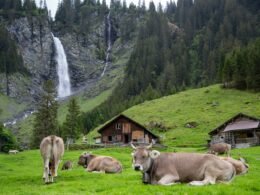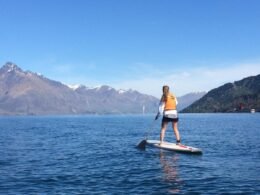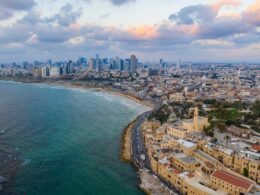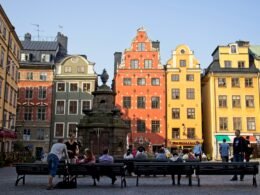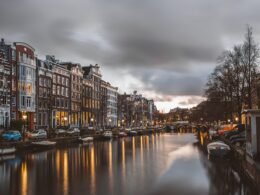As one of the most beautiful countries in Europe, Austria is significantly underrated.
Often overshadowed by its neighbor, Switzerland, Austria is home to stunning alpine towns, lakes, and jaw-dropping landscapes.
Because of the beauty found in Austria, a seven-day road trip through the country has to be on everyone’s bucket list.
Whether it’s your first time visiting Austria or your first time planning an Austrian road trip, here is everything you need to know before embarking on this seven-day Austria itinerary.
Table of Contents
The Best Time to Visit Austria
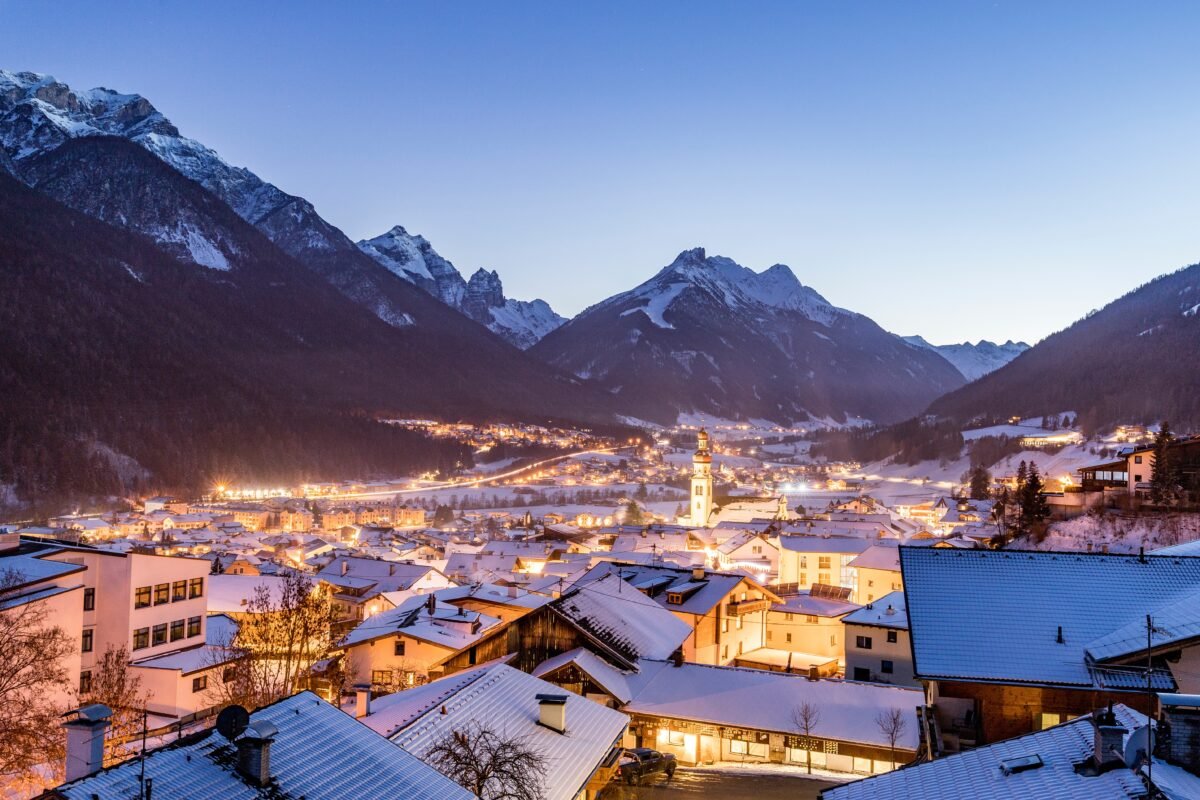
Austria is a beautiful country to visit no matter the time of year. However, to enjoy this itinerary to the fullest, winter or spring is the best time to visit.
During winter, towns are dusted in white snow and mountains are covered, providing some of Europe’s best skiing and snowboarding. Some of the best ski resorts in Austria include Söll, Kitbühel, Mayrhofen and St Anton.
During spring, wildflowers bloom around the country, the temperatures are warm, and the days are long, meaning you can spend more time outdoors exploring the best of what the country has to offer.
What to Know Before You Go

Currency
The currency in Austria is the Euro.
Safety
Austria is one of the safest countries in the world. However, it’s always wise to be vigilant.
Language
The language spoken in Austria is German. However, most Austrians speak English, so you won’t have trouble communicating, but it’s always best to learn some basics such as hello, please, thank you and goodbye.
Drinking water
If you’ve been to countries where the only place you can drink water from is a bottle, it’s not the case in Austria!
The water in Austria is rated among the top five best drinking water in the world. So if you’re thirsty, you can walk into a bathroom and drink the water from the tap!
How to Get Around Austria

Austria is served by a great rail network, and buses cover most of the places you’ll want to get to beyond the tracks.
You can easily follow this seven-day Austria itinerary with public transport. However, with fantastic highway systems, it’s also very easy to hire a car and drive around the country.
So now that you know all the basics, here is the ultimate seven-day Austria itinerary.
Day 1: Arrive in Vienna

The first day of the seven-day Austria itinerary begins when you arrive in the capital of Vienna.
Situated on the banks of the Danube River, Vienna is considered the cultural capital of Europe as it’s home to imperial palaces, music and history.
With so much to see and do in Vienna, you could easily spend one week exploring the capital, but this itinerary will cut it down to three days.
Depending on whether you arrive in the morning or afternoon, you’ll be able to tick at least one activity off this list.
If you arrive in the morning, the best thing to do is head to your accommodation, wander the streets and get your bearings and head to a cafe to try a traditional sacher torte (chocolate cake), the best way to welcome yourself to Austria. If you arrive in the evening, the best thing to do is head to your accommodation and get some rest before a big day of exploring tomorrow.
Day 2: Explore Vienna
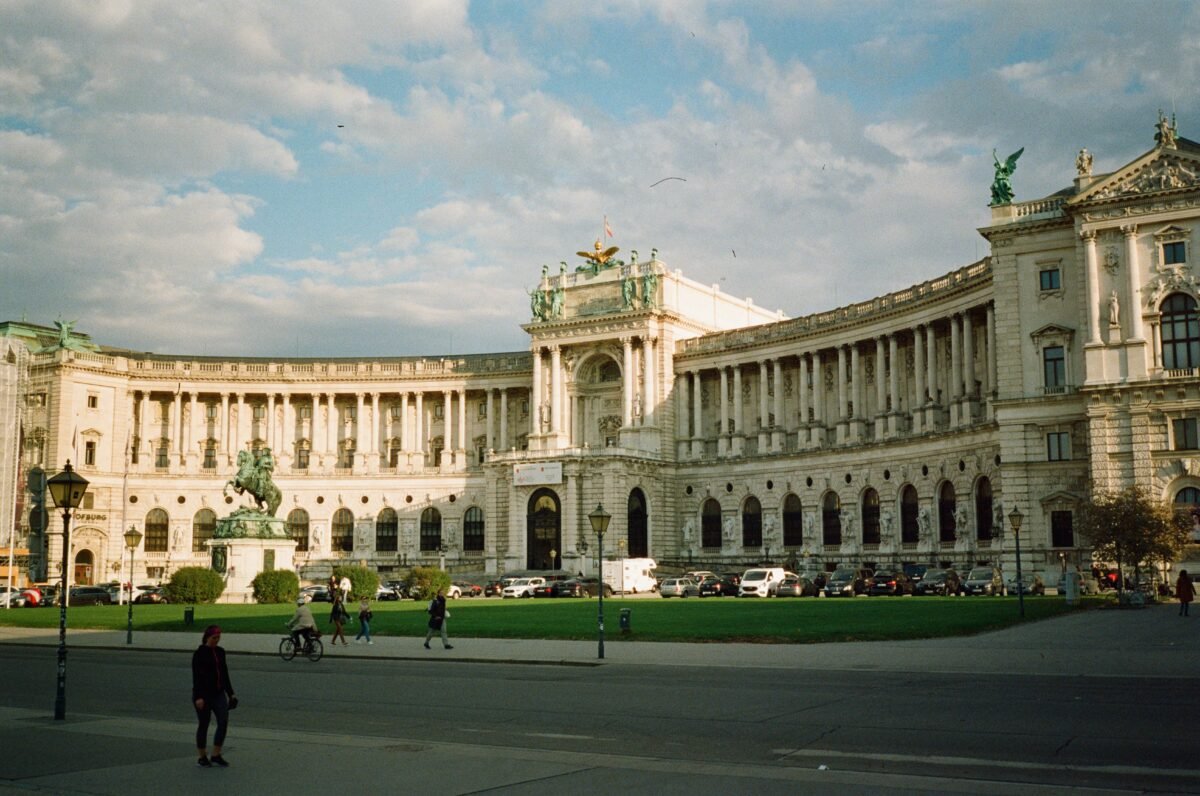
Hofburg Palace
On your second day in Vienna, get up early and head to the Hofburg Palace.
For over 600 years, the palace was the winter home of the Austrian dynasty. Dating back to the 13th century, the palace was extended by emperors who occupied the residence until 1918. Since 1946, the complex has been home to the office of the Austrian President.
Made up of 2,600 rooms, parts of the palace are open to the public. One of the best places to see in the palace is the Sisi Museum which offers insights into the life of Empress Elisabeth. The Imperial Apartments are also open to the public, where visitors can see how Emperor Franz Joseph and his wife Sisi lived.
Hours: September – June 9 am – 5:30 pm, July – August 9 am – 6 pm
Cost: 15 EUR
St. Stephen’s Cathedral
After exploring the Hofburg Palace, make your way to St. Stephen’s Cathedral.
The tower of the cathedral, with its famous multi-coloured roof, has dominated the city’s skyline since its construction.
The Gothic church is the seat of the Archbishop of Vienna, and stepping inside, you will see the 18 altars, small chapels and tombs.
For fantastic views of the city, you can head up the 136m high south tower. There is no lift in the tower, so climbing the 343 stairs takes around ten minutes, but it’s so worth it for the view at the top!
Hours: Monday – Saturday 9 am – 11:30 am and 1 pm to 4:30 pm. Sundays and public holidays 1 pm – 4:30 pm
Cost: Free
Wiener Riesenrad
What better way to end your first full day exploring Vienna than to watch the sunset atop the city’s giant Ferris wheel?
Originally built in 1897, the 65m tall Ferris wheel that stands today isn’t the original, but the 20-minute full rotation at sunset is a great way to slow down and take in the beauty that is Vienna as the sun goes down.
Hours: 10 am – 8 pm
Cost: 10 EUR
Day 3: Vienna
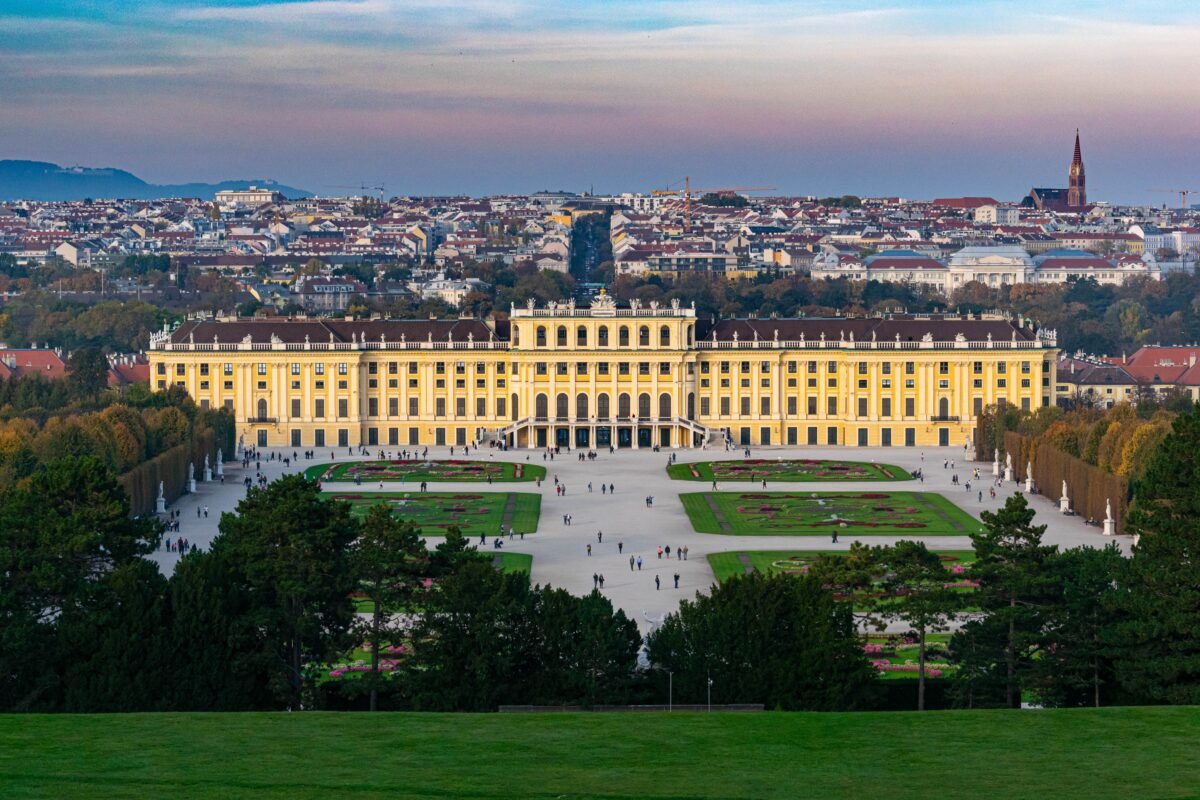
Schönbrunn Palace
Your third and final day in Vienna will begin with an early start heading just outside the city centre to the stunning Schönbrunn Palace.
The 1,441-room palace is considered one of the most important buildings in the entire country. The palace is over 300 years old and was the summer palace of the Austrian royal family, the Habsburgs.
While the palace may look extravagant from the outside, it’s even more so on the inside, so taking a tour of the palace is a must! The tour will take you through 40 ornately designed rooms and the gardens full of mazes, fountains and flowers.
Hours: April – June & September – October 8 am – 5:30 pm. July – August 8 am – 6:30 pm. November – March 8 am – 5 pm
Cost: 17.50 EUR
Apple Strudel Show
While in Vienna, one of the best things to do is try apple strudel and what better place to try it than a palace?
In the Schönbrunn Palace’s Cafe Residenz, you can watch an apple strudel show in the court bakery, where it has been baked for centuries. The show lasts around 20-minutes, and at the end, you’ll get to indulge in a freshly baked Viennese apple strudel.
Hours: 11 am – 4 pm, with shows every hour
Cost: 11.90 EUR
Day 4: Vienna to Salzburg

After three days of exploring the capital, it’s time to get up early and head west to Salzburg. These are two of the best ways to travel from Vienna to Salzburg
- By Train: This is the easiest way to travel from Vienna to Salzburg. The journey takes around two hours and 40 minutes.
- By hire car: If you plan on hiring a car to travel to Salzburg, the journey may take three hours, but you’ll be rewarded with seeing the stunning countryside along the way.
While you can catch a plane from Vienna to Salzburg, the time it takes to get to the airport, check-in and get through security doesn’t make much sense. It’s much easier and faster to catch the train or drive there yourself.
Once you arrive in Salzburg, drop off your luggage at your accommodation and head to the Salzburg Fortress.
Salzburg Fortress
The Salzburg Fortress that sits atop the Festungsberg has been overlooking the city since the 10th century. It is one of the largest intact fortresses in all of Europe and has never been overtaken by foreign forces. History aside, the best part about the fortress? The view!
From the top of the fortress, you’re greeted with panoramic views of the Old Town and Alps in the distance. The view from the top of the Salzburg Fortress and the history that goes along with it are reason enough to add this activity to your Salzburg bucket list.
Hours: January – April and October – December 9:30 am – 5 pm. May to September 9 am – 7 pm
Cost: 12.90 EUR
Alstadt (Old Town)
After seeing the Old Town from atop the Salzburg Fortress, the next best thing to do is see it up close!
Wandering through the Old Town is literally like stepping back in time and makes for a perfect mid-afternoon activity. Stroll down the Medieval shopping street of Getreidgasse and see what the shops have on offer.
Mirabell Palace and Gardens
If you haven’t noticed already, Austrians are very fond of their palaces, and one you can’t miss while in Salzburg is Mirabell Palace.
The palace was built in 1606 by Prince-Archbishop Wolf Dietrich, but you probably recognise it and its stunning gardens from The Sound of Music.
You can wander through the palace, Marble Hall (considered one of the most beautiful wedding venues in the world) and gardens free of charge.
Hours: Mirabell Palace and Angel Staircase 8 am – 6 pm daily. Marble Hall Monday, Wednesday and Thursday 8 am 4 pm. Tuesday and Friday 1 pm – 4 pm. Gardens 6 am – dusk
Cost: Free
Mozart’s Birthplace
While in Salzburg, one of the must-do activities is visiting the birthplace of the famous composer Mozart.
Located in the Old Town, Mozart’s birthplace is one of the most visited museums in Austria and lets you step back in time to when it was occupied by Salzburg’s most famous resident and his family.
Hours: 9 am – 5 pm daily
Cost: 12 EUR
Day 5: Salzburg to Hallstatt Day Trip

No trip to Austria would be complete without visiting the picturesque alpine town of Hallstatt. No matter if you’re holidaying in winter or spring, a trip to this quaint town is a must.
Although getting from Salzburg to Hallstatt is a little challenging, it’s worth it. Here’s how to get there.
- By train: There is no direct train from Salzburg to Hallstatt, so you’ll have to change trains on the way. The scenic views you see along the train journey are breathtaking and make the two-hour journey go quick. When you arrive at Hallstatt Main Station, you’ll find yourself on the opposite side of the lake, so you’ll have to take the ferry across.
- By car: If you have been travelling around the country in your rental car, the journey from Salzburg to Hallstatt will take just under 90-minutes. The most scenic route is along B158 via Fuschl, St Wolfgang, Bad Ischl and Bad Goisern.
- Tour company: Or, to make it easier for you, you can book an organised day trip with one of the many tour companies taking tourists from Salzburg to Hallstatt.
Located on Lake Hallstatt’s western shores, Hallstatt is a picture-perfect alpine village that is one of the oldest still-inhabited villages in Europe. If you’ve seen any photos of the beautiful town, once you arrive there, it’s like you’ve stepped into the picture!
Home to the world’s first salt mine, Hallstatt is now a UNESCO World Heritage site that boasts beautiful alpine houses, quaint streets and breathtaking views from the lakeside.
Some of the best things to do on your Hallstatt day trip include
Wander through the town
Hallstatt is only one kilometre long from end to end, so wandering through the beautiful streets is one of the best things to do. If you walk to the north end of the village and past the ferry station, you will end with a picture-perfect view of the lake, church and mountains, the most famous photo spot in the town.
Soak in the views on the Skywalk
It’s no secret that everywhere you turn in Hallstatt, you’re greeted with breathtaking views, and the views you get atop the Skywalk are no exception!
Make your way to the southern end of the town and take the cable car to the top of Salt Mountain. Walk out on the free-floating Skywalk 350 metres above Hallstatt for unforgettable views. Whether in winter or summer, the Skywalk views do not disappoint.
Hallstatt Salt Mine
You can’t visit Hallstatt without taking a tour through its main attraction, the world’s first salt mine, which is 7,000 years old! Take a tour of the mine to learn about its history and the life of the miners who worked there. There is also a slide in the mine, which is a fun way to get from one level to another!
Day 6: Salzburg to Innsbruck

The second to last day of your seven-day Austria itinerary will take you along the breathtaking journey from Salzburg to Innsbruck. Two of the best ways to get from Salzburg to Innsbruck include
- By train: The direct train gets you to Innsbruck from Salzburg in under two hours, with ticket prices starting from 9 EUR one-way.
- By car: If you’re travelling throughout Austria in a rental car, you have the advantage of being able to take your time getting to Innsbruck and stopping at all of the beautiful sights along the way. Some gorgeous places you can stop at along the way include Zell am See, Mittersil, Gerlos Pass and Ziller Valley.
Alstadt (Old Town)
After dropping off your things at your accommodation, the best thing to do to start your day in Innsbruck is to visit the Old Town.
If you’re visiting in winter, wandering through the streets and finding a warm cafe to escape the cold, grabbing a hot coffee and warm apple strudel is one of the best things to do. Instead of escaping the cold in spring, head into an air-conditioned cafe and sip on a cool Almdudler!
Imperial Palace
Like every city mentioned on this seven-day Austria itinerary, one of the best things to do in Innsbruck is to visit the Imperial Palace.
The Imperial Palace in Innsbruck was built in the 15th century by Emperor Maximilian I and is one of the three most important historical/cultural monuments in the country.
Once a former royal residence, the palace now serves as a museum where you can see how the Habsburgs lived. While only a small portion of the palace is open to visitors, it’s a must-see while in Innsbruck.
Hours: 9 am – 5 pm daily
Cost: 9.50 EUR
Tirol Panorama
One of the must-visit sights in Innsbruck is the Tirol Panorama. Set atop Bergisel Hill, the site of the Four Battles of Bergisel in 1809, the battle was the inspiration for the Tirol Panorama, Tyrol’s largest oil painting.
The canvas is a 360-degree experience that stretches over more than 1,000 square metres, making it feel as though you’ve stepped into the middle of the battlefield.
Hours: Wednesday – Monday 9 am – 5 pm
Cost: 8 EUR
Day 7: Innsbruck to Vienna

The last day of your seven-day Austria itinerary will take you on a scenic journey from Innsbruck to Vienna.
There are three main ways to get to Vienna from Innsbruck, including
- By train: The four-hour train journey will take you past some of the most stunning sights in Austria, including lakes and even into Germany!
- By car: The last leg of your journey from Innsbruck to Vienna will take six hours, but this means you can stop off at places along the way.
- By plane: The fastest way to get from Innsbruck to Vienna is via a one-hour plane ride.
Depending on when you arrive back in Vienna and when your departing flight is, you can spend a few hours wandering around the city centre and indulging in one last sacher torte at a traditional Viennese cafe!
Ultimate 7-Day Austria Itinerary

Although Austria may be one of the smallest countries in Europe, it packs a lot in, from incredible history to picturesque towns and breathtaking alps.
Whether you plan on embarking on this seven-day Austria itinerary in the middle of winter or spring, you will not be disappointed with what you’ll see and do along the way.
The train journeys take you past snow-capped mountains and frozen lakes in winter. You can wander through picturesque snow-dusted villages and indulge in hot chocolate every chance you get.
In spring, you’ll be blown away by the beauty of the blooming wildflowers and the activities you can do outdoors. Austria is bound to blow you away no matter the time of year.
From exploring historical Vienna to wandering through picturesque alpine villages, Austria is a country that has it all and is worth being at the top of your bucket list.
So, what time of year will you start your journey through Austria?







